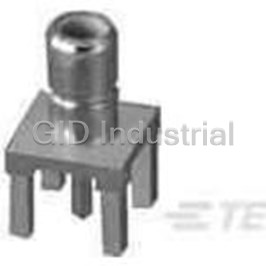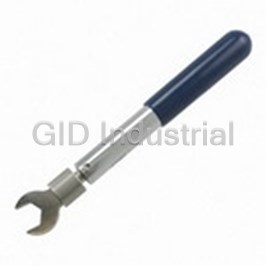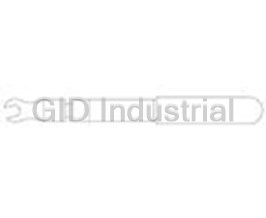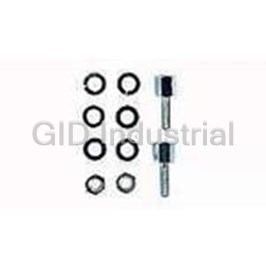TE CONNECTIVITY 1490597-1
Specifications
Manufacturer
TE Connectivity
Manufacturers Part #
1490597-1
Industry Aliases
1490597-1
Sub-Category
Hardware Tools
Brand
AMP
Factory Pack Quantity
1
Datasheet
Extracted Text
Instruction Sheet Crimping Die Assemblies; PN 1490406-1, PN 1490597-1, PN 1490598-1, 408-8704 PN 1490599-1, and PN 1490700-1 22 AUG 17 Rev C PROPER USE GUIDELINES Cumulative Trauma Disorders can result from the prolonged use of manually powered hand tools. Hand tools are intended for occasional use and low volume applications. A wide selection of powered application equipment for extended-use, production operations is available. Crimping Die Head or Tool Wire Size Part Color Code (AWG) Hydraulic Crimping Hydraulic Hand Battery-Powered Number Dot Heads Tool(s) Crimp Tools 1490597-1 Red 8 1490745-1, 1490746-1, 1490748-1, 1490598-1 Blue 6 2280116-[ ] (1) 1490747-1, 1976230-1 1490749-1 1490599-1 Yellow 4 2161171-[ ] 1490406-1 Red 2 (1) 1490746-1, 1976230-1 1490749-1 1490700-1 Blue 1/0 N/A (1) Not to be used for splices Figure 1 1. INTRODUCTION The crimping die assemblies listed in Figure 1 crimp TERMINYL* terminals and splices onto wire sizes 8 through 1/0 AWG. Refer to Figure 1 to ensure compatibility of crimping die, head or tool, and wire size. NOTE Dimensions in this document are in millimeters [with inches in brackets]. Figures and illustrations are for reference only and are not drawn to scale. For detailed information about the head or tool, refer to the instructions packaged with the head or tool. Reasons for reissue of this instruction sheet are provided in Section 8, REVISION SUMMARY. 2. DESCRIPTION Each crimping die consists of a stationary die (nest) and a moving die (anvil). The stationary die features a locator. Each die contains a color code dot that matches the color code of the terminal and splice. When mated, the dies form a crimping chamber. © 2017 TE Connectivity Ltd. family of companies. PRODUCT INFORMATION 1-800-522-6752 This controlled document is subject to change. 1 of 10 All Rights Reserved. For latest revision and Regional Customer Service, *Trademark visit our website at www.te.com. TE Connectivity, TE connectivity (logo), and TE (logo) are trademarks. Other logos, product, and/or company names may be trademarks of their respective owners. 408-8704 3. DIE INSTALLATION AND REMOVAL (FIGURE 2) CAUTION DO NOT operate the tool without the dies. DANGER To avoid personal injury, ALWAYS release hydraulic pressure to hose or control and disconnect power unit from power supply before installing or removing dies. Figure 2 3.1. Die Installation 1. Depress the upper release button located in the C-head and slide the nest into place. 2. Release the button and rock the die back and forth until the nest snaps in place. 3. Activate the power unit until the lower die release button located in the ram is exposed. 4. Depress the release button and slide the indenter into place. 5. Release the button and rock the indenter back and forth until the die snaps in place. 6. Return the ram to the down position. CAUTION To avoid damage to the dies, be sure that the moving and stationary dies are properly oriented. 3.2. Die Removal Ensure that the possibility of accidental activation of the hydraulic power unit has been eliminated, and proceed as follows: 1. Depress the upper release button located in the C-head and slide the nest out of the head. 2. Activate the power unit until the lower die release button in the ram is exposed. 3. Depress the release button and slide the indenter out of the ram. 2 of 10 Rev C 408-8704 4. CRIMPING PROCEDURE 4.1. Crimping Terminals DANGER Avoid personal injury. When operating tool or power unit, exercise caution while holding terminals or wire near the crimping area. 1. Strip wire to the dimensions listed in Figure 3. DO NOT nick or cut the wire strands. Wire Strip Length Wire Size TERMINYL Terminal and Splice (AWG) Terminal Splice 8 7.96-9.53 [.313-.375] 15.48-17.07 [.609-.672] 6 11.18-12.70 [.440-.500] 19.45-20.24 [.766-.797] 4 11.18-12.70 [.440-.500] 19.45-21.03 [.766-.828] 2 11.43-13.08 [.450-.515] 21.83-30.18 [.859-1.188] 1/0 18.54-20.24 [.730-.797] 28.58-30.18 [1.125-1.188] 2/0 18.54-20.24 [.730-.797] 28.58-30.18 [1.125-1.188] 3/0 19.05-20.64 [.750-.813] 28.58-30.18 [1.125-1.188] 4/0 19.45-21.03 [.766-.828] 28.58-30.18 [1.125-1.188] Figure 3 2. Select the proper color-coded terminal for the wire size (the wire size stamped on the terminal tongue and on the crimping die must match the wire size selected). 3. Insert stripped wire fully into terminal wire barrel. The end of the conductor must not protrude more than 1.60 mm [.063 in.] beyond the edge of the wire barrel. CAUTION DO NOT turn or twist the wire or terminal during insertion. 4. Place the terminal in the stationary die with the edge of the wire barrel resting against the locator and the bottom of the terminal tongue facing the stationary die (see Figure 4). 5. Holding the wire in place, activate tool or power unit to complete crimp. NOTE If terminal sticks in the die after crimping, apply a rocking action to the terminal to loosen it from the die. Wipe light oil on the dies to prevent sticking, or spray dry lubricant. 6. Inspect the crimp according to Section 5. 3 of 10 Rev C 408-8704 Figure 4 4.2. Crimping Splices DANGER Avoid personal injury. When operating tool or power unit, exercise caution while holding splice or wire near the crimping area. 1. Strip wires to the dimensions listed in Figure 3. DO NOT nick or cut the wire strands. 2. Select the proper color-coded splice for the wire size (the wire size stamped on the splice and on the crimping die must match the wire size selected). 3. Insert the stripped wire into the wire barrel of the end of the splice to be crimped until the wire bottoms against the wire stop within the splice. 4. Place the splice in the stationary die. Grasp the end of the splice to be crimped and point the opposite end toward the top of the head yoke at approximately a 30 degree angle. Rotate the end of the splice to be crimped into the die. Position the edge of the window indent against the locator. Refer to Figure 5. Figure 5 5. Holding wire in place, activate tool or power unit to complete the first wire barrel crimp. 4 of 10 Rev C 408-8704 6. When crimp is completed, remove the latch pin, open the yoke and remove the splice. NOTE If splice sticks in the die after crimping, apply a rocking action to the terminal to loosen it from the die. Wipe light oil on the dies to prevent sticking, or spray dry lubricant. 7. To crimp the other half of splice, reposition un-crimped end of splice in the stationary die and follow the same procedure used to crimp the first half of splice. 8. Inspect the crimp according to Section 5. 4.3. Crimping Splices with Step-Down Adapter DANGER Avoid personal injury. When operating tool or power unit, exercise caution while holding splice or wire near the crimping area. 1. Strip wires to the dimensions listed in Figure 3. DO NOT nick or cut the wire strands. 2. Select the proper splice, adapter, and crimping die for the wire size (see Figure 6). *Note that the end of the splice containing the adapter has a different color code. Use the crimping die for the larger wire size to crimp both ends of the splice. For example, use Crimping Die PN 1490598– 1 (for wire size 6 AWG) to crimp both ends of the splice with step-down adapter for stepping down from wire size 6 to 8 AWG. Step-Down Adapter Wire Size (AWG) Die and Splice Step-Down Adapter Crimping Die Step Color Code Color Code 8 to 12-10 1490597-1 Red Yellow 6 to 8 1490598-1 Blue Red Figure 6 3. Insert stripped wire into the wire barrel of the end of the splice to be crimped until the wire bottoms against the wire stop within the splice. Refer to Figure 3. 4. Remove crimping head latch pin and open yoke. 5. Place the splice in the stationary die. Grasp the end of the splice to be crimped and point the opposite end toward the top of the head yoke at approximately a 30 degree angle. Rotate the end of the splice to be crimped into the die. Position the edge of the window indent against the locator. Refer to Figure 5. 6. Holding the splice in place, close the yoke and insert the latch pin. CAUTION Be sure the latch pin is fully inserted, or damage to the dies and tool or head will occur when activated. 7. Holding the wire in place, activate tool or power unit to complete first wire barrel crimp. 8. When the crimp is completed, remove the latch pin, open the yoke and remove splice. NOTE If splice sticks in the die after crimping, apply a rocking action to the terminal to loosen it from the die. Wipe light oil on the dies to prevent sticking, or spray dry lubricant. 9. To crimp the other half of splice, reposition un-crimped end of splice in the stationary die and follow the same procedure used to crimp the first half of splice. 10. Inspect the crimp according to Section 5. 5 of 10 Rev C 408-8704 5. CRIMP INSPECTION Inspect crimped terminals and splices by checking the features described in Figure 7. Use only the terminals and splices that meet the conditions shown in the “ACCEPT” column. Figure 7 6 of 10 Rev C 408-8704 6. MAINTENANCE / INSPECTION DANGER To avoid personal injury, ALWAYS release hydraulic pressure to hose or control and disconnect power unit from power supply before performing maintenance or inspection procedure. Each crimping die is thoroughly inspected before packaging. Since there is a possibility of damage during shipment, the crimping die should be inspected immediately upon arrival at your facility. Regular inspections should be performed by quality control personnel. A record of scheduled inspections should remain with the dies and/or be supplied to supervisory personnel responsible for the dies. Though recommendations call for at least one inspection a month, the inspection frequency should be based on the amount of use, ambient working conditions, operator training and skill, and established company standards. CAUTION Regular inspections should include checking torque setting of (4) screws in accordance with Figure 8. Torque (4) Screws in Accordance with Figure 8. Screw Torque Setting Crimping Die Wire Size Specification PN (AWG) (inch-pounds) 1490597-1 8 28 1490598-1 6 28 1490599-1 4 28 1490406-1 2 28 1490700-1 1/0 49 Figure 8 7 of 10 Rev C 408-8704 6.1. Daily Maintenance It is recommended that each operator of the dies be made aware of-and responsible for-the following steps of daily maintenance: 1. Remove dust, dirt, and other contaminants with a clean brush, or a soft, lint--free cloth. Do NOT use objects that could damage the dies. 2. Make certain the dies are protected with a THIN coat of any good SAE 20 motor oil. Do not oil excessively. 3. When the dies are not in use, mate them and store in a clean, dry area. 6.2. Visual Inspection 1. Remove all lubrication and accumulated film by immersing the dies in a suitable commercial degreaser that will not affect paint or plastic material. 2. Make sure all die components are in place. If replacements are necessary, refer to the replacement parts listed in Figure 11. 3. Check components for wear. Remove and replace worn components. 4. Inspect the crimp area for flattened, chipped, cracked, worn, or broken areas. If damage is evident, the dies must be repaired before returning them to service (see Section 7, REPLACEMENT AND REPAIR). 6.3. Gaging the Crimping Chamber The die closure inspection is accomplished using plug gages. A suggested gage design and the GO and NO- GO diameters of the plug gage elements are shown in Figure 9. Figure 9 8 of 10 Rev C 408-8704 The following procedure is recommended for inspecting the die closures: 1. Mate the dies until it is evident that they have bottomed. Hold the dies in this position. 2. Align the GO element with the crimping chamber. Push element straight into the crimping chamber without using force. The GO element must pass completely through the crimping chamber as shown in Figure 10. 3. Align the NO-GO element and try to insert it straight into the crimping chamber. The NO-GO element may start entry but must not pass completely through as shown in Figure 10. If the crimping chamber conforms to the gage inspection, the crimping die is considered dimensionally correct and should be lubricated with a THIN coat of SAE 20 motor oil. If the crimping chamber DOES NOT conform to the gage inspection not, the dies must be repaired before returning them to service (see Section 7, REPLACEMENT AND REPAIR). For additional information concerning the use of a plug gage, refer to Instruction Sheet 408-7424. Figure 10 7. REPLACEMENT AND REPAIR The parts listed in Figure 11 are customer-replaceable. A complete inventory can be stocked and controlled to prevent lost time when replacement of parts is necessary. Order replacement parts through your TE Connectivity Representative, or call 1-800-526-5142, or send a facsimile of your purchase order to 1-717-986- 7605, or write to: CUSTOMER SERVICE (038-035) TE CONNECTIVITY CORPORATION P.O. BOX 3608 HARRISBURG, PA 17105—3608 NOTE Dies may be returned for evaluation and repair. For die repair service, contact a TE Representative at 1-800-526-5136. 9 of 10 Rev C 408-8704 8. REVISION SUMMARY Added Battery Powered Crimp Tools 2280116-[ ], and 2161171-[ ] to Figure 1 for wire sizes 2,4, 6, and 8 AWG. Replacement Parts Part Number for Crimping Die Assembly Qty Item Description Per 1490597-1 1490598-1 1490599-1 1490406-1 1490700-1 Assy 1 1490407-4 1490407-3 1490407-2 1490407-1 1490407-5 Die, Moving 1 Die, 2 1490353-4 1490353-3 1490353-2 1490353-1 1490353-5 1 Stationary 3 1490357-3 1490357-2 1490357-1 1490791-3 1490791-2 Locator 1 4 8-21000-8 1-21000-9 2-21000-0 4-306105-4 3-21000-0 Screw 2 5 21018-5 21018-6 Nut 2 6 4-306105-5 2-306105-5 2-21000-2 4-306105-6 6-305927-4 Screw 2 7 1490356-7 1490356-6 1490356-5 1490356-1 1490356-8 Plate, Flare 1 Plate, Flare, 8 ---- ---- ---- 1490356-4 1-1490356-1 1 Lower Plate, Flare, 9 ---- ---- ---- 1490356-3 1-1490356-0 1 Upper 10 1490356-7 1490356-6 1490356-5 1490356-2 1490356-9 Plate, Flare 1 CAUTION Apply LOCTITE THREADLOCKER BLUE 242 or LOCTITE THREADLOCKER BLUE 243 to threads of items 4, 5, and 6. Torque screws to applicable specification in Figure 8. Figure 11 LOCTITE, THREADLOCKER BLUE 242, and THREADLOCKER BLUE 243 are trademarks. 10 of 10 Rev C
Frequently asked questions
How does Electronics Finder differ from its competitors?

Is there a warranty for the 1490597-1?

Which carrier will Electronics Finder use to ship my parts?

Can I buy parts from Electronics Finder if I am outside the USA?

Which payment methods does Electronics Finder accept?

Why buy from GID?

Quality
We are industry veterans who take pride in our work

Protection
Avoid the dangers of risky trading in the gray market

Access
Our network of suppliers is ready and at your disposal

Savings
Maintain legacy systems to prevent costly downtime

Speed
Time is of the essence, and we are respectful of yours



 Manufacturers
Manufacturers










What they say about us
FANTASTIC RESOURCE
One of our top priorities is maintaining our business with precision, and we are constantly looking for affiliates that can help us achieve our goal. With the aid of GID Industrial, our obsolete product management has never been more efficient. They have been a great resource to our company, and have quickly become a go-to supplier on our list!
Bucher Emhart Glass
EXCELLENT SERVICE
With our strict fundamentals and high expectations, we were surprised when we came across GID Industrial and their competitive pricing. When we approached them with our issue, they were incredibly confident in being able to provide us with a seamless solution at the best price for us. GID Industrial quickly understood our needs and provided us with excellent service, as well as fully tested product to ensure what we received would be the right fit for our company.
Fuji
HARD TO FIND A BETTER PROVIDER
Our company provides services to aid in the manufacture of technological products, such as semiconductors and flat panel displays, and often searching for distributors of obsolete product we require can waste time and money. Finding GID Industrial proved to be a great asset to our company, with cost effective solutions and superior knowledge on all of their materials, it’d be hard to find a better provider of obsolete or hard to find products.
Applied Materials
CONSISTENTLY DELIVERS QUALITY SOLUTIONS
Over the years, the equipment used in our company becomes discontinued, but they’re still of great use to us and our customers. Once these products are no longer available through the manufacturer, finding a reliable, quick supplier is a necessity, and luckily for us, GID Industrial has provided the most trustworthy, quality solutions to our obsolete component needs.
Nidec Vamco
TERRIFIC RESOURCE
This company has been a terrific help to us (I work for Trican Well Service) in sourcing the Micron Ram Memory we needed for our Siemens computers. Great service! And great pricing! I know when the product is shipping and when it will arrive, all the way through the ordering process.
Trican Well Service
GO TO SOURCE
When I can't find an obsolete part, I first call GID and they'll come up with my parts every time. Great customer service and follow up as well. Scott emails me from time to time to touch base and see if we're having trouble finding something.....which is often with our 25 yr old equipment.
ConAgra Foods